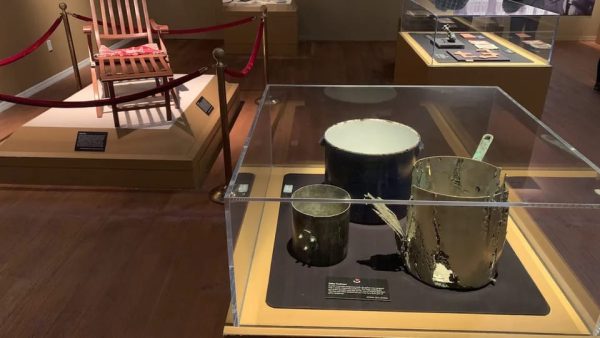How the Radio Works

History
In the 1980’s Italian inventor Guglielmo Marconi conceptualized the first radio, and in 1985 he developed the first radio, using which he could send Morse code to distances of more than a kilometer away. In 1897, he received the official British patent for his invention. In 1914, Reginald Fessenden, a Canadian inventor, was working on a more sophisticated version of the radio, one that could
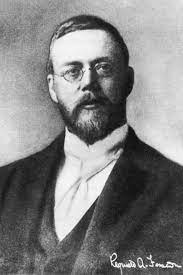
transmit voices and music across thousands of miles. This radio was at first developed for the US military, and in the pre-World War one years, the U.S. Navy held the patents to the invention. In 1919, after Marconi’s resources were sold to General Electric, the RCA (radio corporation of America) was formed, and with that the radio boom began. In 1920 radio popularity kept growing more and more, with 576 licensed broadcasters by the date, radio became the pinnacle of news sources and entertainment. By 1939 nearly 80% of the population owned a radio.
How It Works
The most basic form of radio consists of a battery, two wires, and an electricity sensor. By connecting a wire to the battery to form a
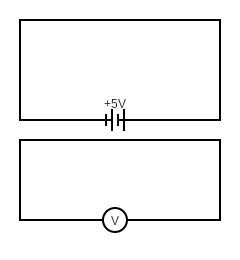
loop (one end of the wire onto the negative side of the battery and the other to the positive side of the battery) electricity flows throw the wire, and because of the electromagnetic properties of a simple wire, a magnetic field is formed around said piece of wire. Then you connect a second piece of wire to an electricity sensor, in the same fashion that we connected the battery, and place the two mechanisms near each other. Now whenever we are to cause a change in voltage, an electrical signal is sent from one wire to the other using the magnetic field, which can be done by simply removing or placing the battery, in the moment that the voltage changes is when information gets sent.
This setup allows the user to send information in the form of square waves, which is the pattern formed when we repeatedly change the voltage of the setup; at one second zero volts, two seconds five volts, three seconds five volts, four seconds zero volts, and so on.
But no one wants to manually place and remove a battery to send information, so instead of sending square waves, we send sine waves. A sine wave is different from a square wave only in its shape; it’s not square with instant changes in voltage but is wavy with voltages gradually increasing or decreasing from one state to another. This effect is achieved using an oscillator, which allows us to automate the process of changing voltage. Let me explain what an oscillator is:
An oscillator is made up of a capacitor and inductor. A capacitor is a piece of technology that works like a battery; it stores and
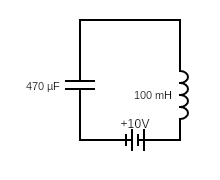
releases electricity. Essentially a capacitor is two metal plates separated by an insulator. When the capacitor receives electricity from a battery, the plate attached to the negative terminal (side) of the battery receives electrons, and the plate attached to the positive terminal of the battery loses electrons, once it is fully charged the capacitor has the same voltage as the battery. You can think of a capacitor as like a water tower, it takes in excess city water (electricity in our case) and releases it when there’s a need for additional water because of a drought. An inductor on the other hand is just some coiled wire, which gives it the ability to produce a magnetic field. The inductor when connected to a circuit wants to build up a magnetic field, so it inhibits any other flow in the circuit (for example if the circuit also had a light bulb in place, the bulb would glow very dim until the inductor was charged, after which it would glow like normal) and if the circuit loses its energy source while the inductor is charged (ex: you removed the battery) the inductor would fill in for the absence (adding to the previous example, if we were to take out the battery the light bulb would continue to glow, slowly dimming as the inductor loses energy, until the inductor lost all of its electricity, and the light bulb turned off.) You can think of an inductor as like a water wheel; when the current flows it takes some time to get it spinning at full speed, and if we are to suddenly remove the flow, it will continue spinning slowly losing energy. By connecting a charged capacitor and an inductor with a wire, the electricity current will flow from the capacitor to the inductor (charging the inductor) and after the capacitor loses all energy the inductor will kick in, transferring electricity from itself to the capacitor. This process loops forever and gives us a sine wave.
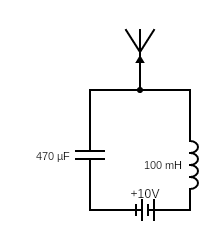
If we are to connect an oscillator to an antenna the electricity will go into the antenna, and then turn into a magnetic field that is transferred through the air. To successfully catch this signal, we need a receiver mechanism, which is just a wire or another antenna. But how do we send information, say for example a DJ’s voice across this setup? We use modulation.
Modulation is a way of encoding information into sine waves, three types of modulation exist: Amplitude modulation (AM), Frequency modulation (FM), and Pulse modulation (PM). Pulse modulation is the easiest of the three, it is just turning the sine wave on or off. This can be useful for sending Morse code, and the biggest benefit of this method is that it can reach the biggest distance. For example, USA uses pulse modulation to tune some of their clocks, and one PM station is enough to cover the entirety of the country! But as stated before, Pulse modulation is not the only method, another method is Frequency modulation, in which we modify the continuous sine wave’s frequency (how quickly and how often the voltage changes) to send information. The benefit of this method is that it is largely invulnerable to any static, meaning it’s almost un-jammable. It is mostly used for audio on TVs, but not on your everyday car radio. Your everyday car radio most likely uses Amplitude modulation, which is the difference in height of the sine wave achieved by using different amount of electricity, there are two big benefits to this method; first: it is very easy to transmit audio using this way, because both audio and this method use amplitude to achieve different sounds. Second: it is very easy to precisely receive a specific radio transmittance (tune in to a specific radio station) due to a wave frequency phenomenon called “resonance.” Which is when two waves of the same frequency meet, they amplify each other, while waves with different frequency get cancelled out. Think of it like pushing someone on a swing, if you push too fast or too slow then the swing eventually slows to a stop. But if you push at exactly the speed of the swing, then the swing gains more momentum. The same goes for waves, if the same frequency is achieved, the amplitude of the wave increases, while if the frequency is different the amplitude decreases.
But how do we tune in to a specific radio station? You might ask. well using the previously mentioned resonance, by attaching an oscillator (sine wave generator) to the receiving antennae, we can choose exactly which AM radio frequency we want to hear, and to change between different stations, all we have to do is modify the capacitor or inductor, say for example by tightening the induction coil.
Radio is one of humanity’s greatest inventions. It allows us to connect to other people around the world, share news and ideas, and create many other inventions, from cellphones to TVs to your car radio, radio is everywhere, and it’s nice to know how such a wonderful invention works.

